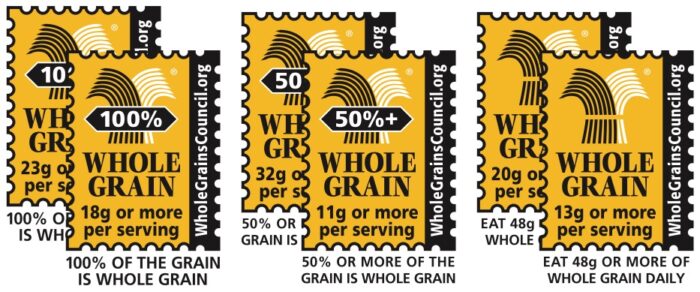
Written By: Christina Newberry
Reviewed By: Gloria Tsang, RD
Title: Registered Dietitian
Last Updated on:

You’re always hearing that you should eat more whole grains, but sometimes it can be difficult to tell which products in the grocery store actually offer the whole grain kick you’re looking for. In fact, if you’re relying on whole grain logos and claims to judge your whole grain intake, you may be getting much less than you think.
The truth is, even though food companies are launching new whole grain products like crazy, we’re still eating less than one-third of the recommended daily amount of whole grains. Since whole grains offer benefits like lowering cholesterol levels, reducing risk for some types of cancer, and controlling weight, that means we’re missing out on a ton of nutritional benefits. If you think you’re one of the few who’s eating as many whole grains as you should, you might want to take a closer look at your sources: Have you really checked them out, or are you simply believing a claim on a box?
Here are our top 3 ways to identify impostors, spot whole grains, and incorporate more of them into your diet.
Table of Contents

Are the grain products you’re eating really giving you the benefits of whole grains? Take a look at the grain products in your cupboards, such as crackers, biscuits, noodles etc and you may be surprised what these tips reveal about the actual amount of whole grains they contain. Rather than relying on claims, check the ingredients list for that simple word, “whole.” Then incorporate some whole grains into non-breakfast meals to add an extra serving to your day.
Alumni: University of Victoria – Christina Newberry is a writer and editor whose work has appeared in national and local magazines and newspapers. With a Bachelor’s degree in English and Anthropology from the University of Victoria and a Journalism Certificate from Langara College, Christina brings keen curiosity and the love of a good story to her work with HealthCastle.com.
Christina is a passionate traveler and urban gardener with an interest in vegetarian eating and making good, tasty food from scratch. Sharing lessons learned from her own experiences, Christina writes about lifestyle topics for HealthCastle, with a focus on eating well at home and on the road.